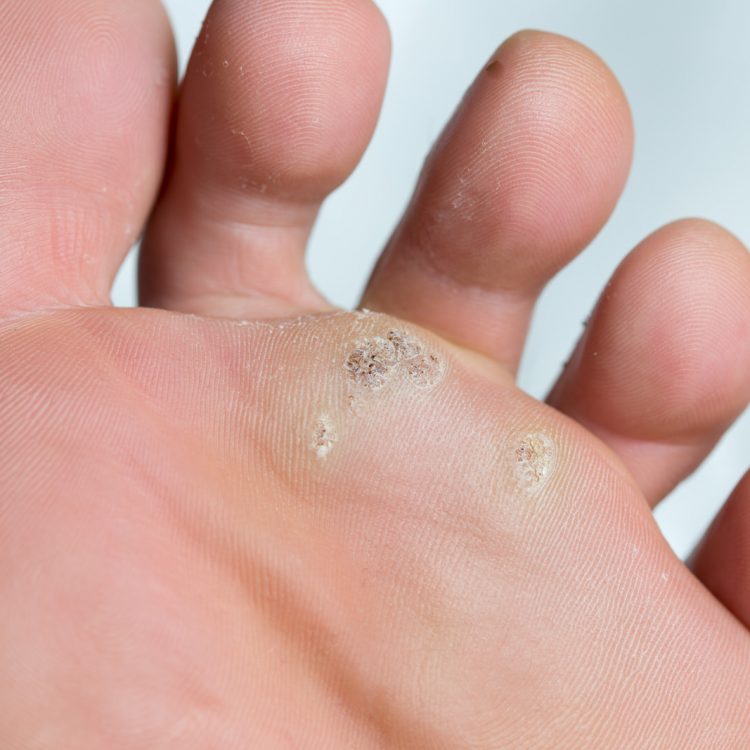A wart on foot is called a plantar wart. A plantar wart is a benign growth that occurs on the bottom of your foot. Warts of the feet are not cancerous. They usually occur on the heal or ball of the foot. Pressure from walking and standing will flatten the wart, and cause them to grow deep into the skin. It is important to treat warts on feet immediately. If left untreated, warts on feet will become very painful and can cause a change in posture, which can lead to back or leg pain.
The cause of warts of the feet is a virus known as human papilloma virus (HPV). This virus will enter the body through a break in the skin on the bottom of the feet. The virus thrives in moist, warm environments. Common places to contract the virus include a locker room, a shower, or a swimming pool.
There is no cure for the HPV virus. Most people will naturally fight off the virus from their body within 2-3 years of infection. However, for many people, the virus can linger years longer. You can also be re-infected at any time.
There are many different treatments for plantar wart removal. The problem is that in most cases, the warts will return. The key to successful plantar wart treatment is to build up your immune system to prevent re-infection.
We have been recommending a plantar wart treatment for several years. It will produce noticeable results in as little as 12 hours, and helps to build up your immune system to reduce the chance that the warts will return. For more information on the best method of plantar wart removal, follow this link to H-Warts.
For additional information about warts on feet, please continue reading.

Wart On Foot – Symptoms And Signs
Most often, warts of the feet are gray or brown, and rough and spongy. They can be dotted with one or more very small, clotted blood vessels that look like dark pinpoint spots. If scraped, the wart will bleed.
Usually only a small portion of the wart is above the skin. The portion under the skin is often twice as big as the part that you can see.
If left untreated, plantar wart symptoms will worsen. They will grow in size, and spread. Clusters of plantar warts are referred to as mosaic warts.
Who Gets A Wart On Foot
Anyone can get warts of the feet . They are seen most often in children, and young adults between 12 and 15. Occurrence is higher among those who use common bathing areas, such as in a dormitory or a gym.
Now that we have gone over general information including warts on feet symptoms, it is important to discuss treatment.
Wart On Foot Treatment
Treating warts on feet is very important. If left untreated, warts of the feet can continue to grow up to an inch in circumference, become more painful, and can spread into clusters.
Plantar wart removal techniques include burning them off with lasers, freezing them (cryotherapy), applying acid to them, or surgically removing them. These treatments are very expensive, and can lead to permanent scarring or disfigurement. Also, there is no guarantee the warts just won’t grow back.
There is a much safer and more effective alternative for warts of the feet. This treatment not only eliminates current warts, but also helps to prevent future outbreaks. For more information on permanent plantar wart removal, follow this link to H-Warts.
Prevention
- Avoid walking barefoot when in public locker rooms or showers.
- Change your socks and shoes daily.
- Try to keep your feet dry and clean.
- Avoid contact with warts, since they are very contagious
If you have any questions about the wart on foot symptoms, or warts on feet removal, please contact us.
More than Wart On Foot on our Plantars Wart page
Healthy Skin Guide Home Page